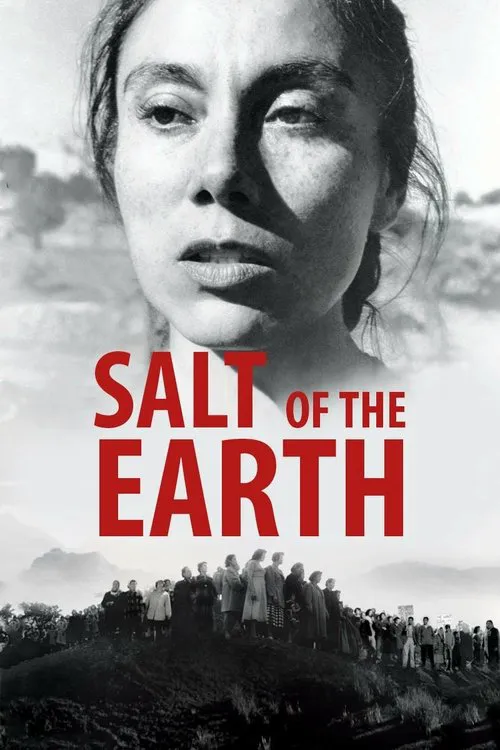Salt of the Earth

Plot
In the 1954 classic American drama film, "Salt of the Earth," directed by Herbert J. Biberman and starring Juan Chacón and Rosaura Revueltas, the cinematography is breathtakingly beautiful, and the screenplay is a gripping narrative of labor and social justice. The story is set in the Empire Zinc mine of New Mexico, where a predominantly Mexican-American workforce toils under harsh conditions. Despite being a crucial part of the operations, these workers, led by Ramon Quintero, a proud and charismatic leader, are treated with blatant disregard by the Anglo-American management. They labor for hours on end with inadequate safety equipment, and their wages are a fraction of what their white counterparts receive. As tensions escalate, Ramon, along with other key figures, decides to organize a strike, demanding fair wages and better working conditions. However, the narrative soon exposes Ramon's personal biases when he is shown treating his pregnant wife, Esperanza, with a similar lack of respect. Despite the societal norms that often placed women in subordinate roles, Ramon, like many of his contemporaries, exhibits patriarchal tendencies towards his partner. However, the strike that Ramon and the other men initiate is eventually met with an injunction from the court, effectively prohibiting them from protesting. In response, Ramon and his fellow men retreat, leaving the women of the strike to pick up the mantle. As the film depicts, this reversal of roles marks a significant shift within the community. The women, previously relegated to domestic roles, now find themselves on the frontlines of the strike. Esperanza, played by Rosaura Revueltas, becomes the leader of this new movement. She organizes her fellow women, rallying them to continue the fight for their rights and those of their families. Under the watchful eye of the management, which is keen to suppress the strike, the women face immense pressure. They are dismissed, intimidated, and even threatened with arrests. Despite these challenges, they hold steadfast, using their collective strength to sustain the strike. As the strike drags on, the lines between the protesters and their detractors become increasingly blurred. The management resorts to various tactics, including attempting to starve out the protesters and labeling them subversives. In response, the women continue to defy these tactics, mobilizing an enormous display of solidarity. One of the striking aspects of the film is its nuanced portrayal of the women's struggle. Despite the historical context of the time being marked by patriarchal dominance, the women of this narrative do not acquiesce. Instead, they push back against these norms, exhibiting courage and resilience in the face of adversity. The climax of the film comes when the government, responding to the intense public outcry generated by the strike, finally intervenes. In a symbolic victory for the protesters, the government begins making concessions to the striking workers. "Salt of the Earth" has gained the distinction of being the first Hollywood film to depict a labor protest from the perspective of workers, particularly those of Mexican-American descent. This pioneering spirit is reflective of the film's groundbreaking approach to the portrayal of working-class Americans. The film received widespread acclaim from critics and labor activists, earning a place among the classics of American cinema. Despite its release in 1954, "Salt of the Earth" remains relevant today, standing as a testament to the enduring power of solidarity and activism in the pursuit of justice.
Reviews
Recommendations




